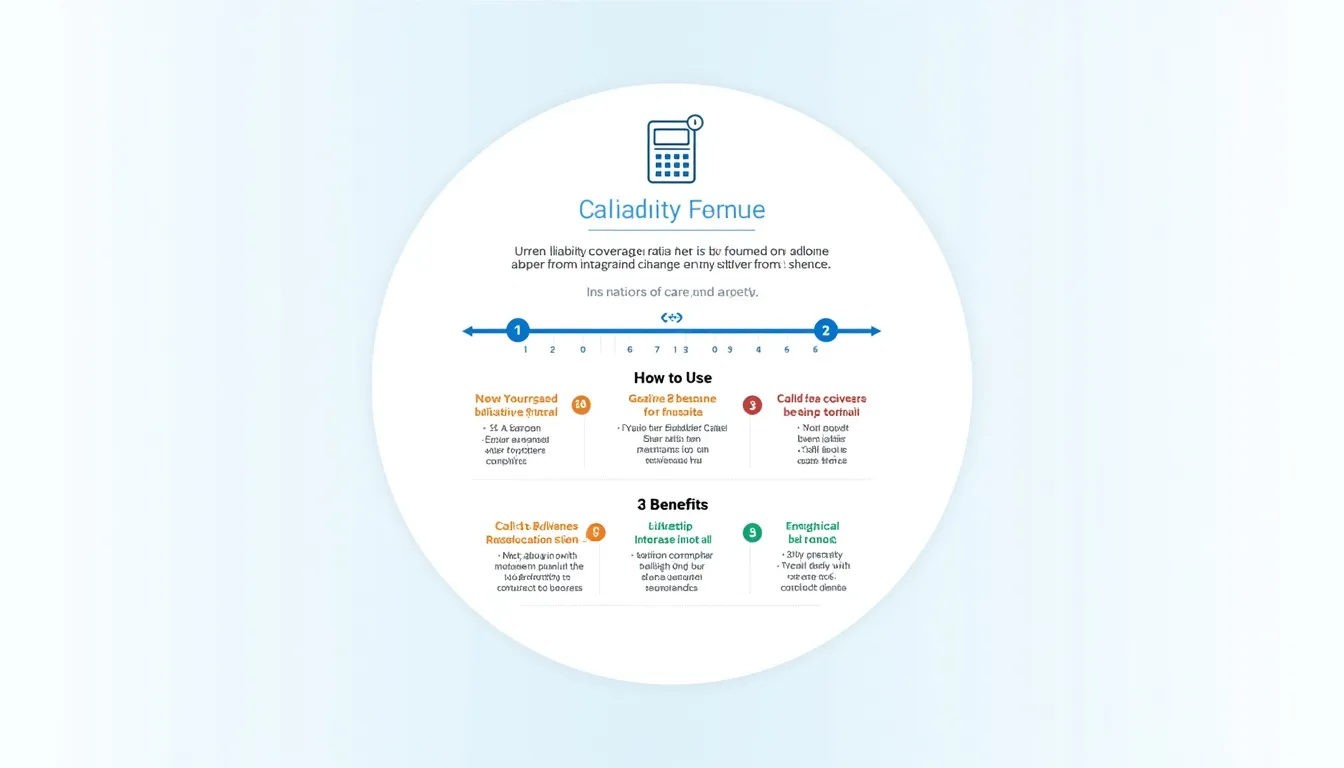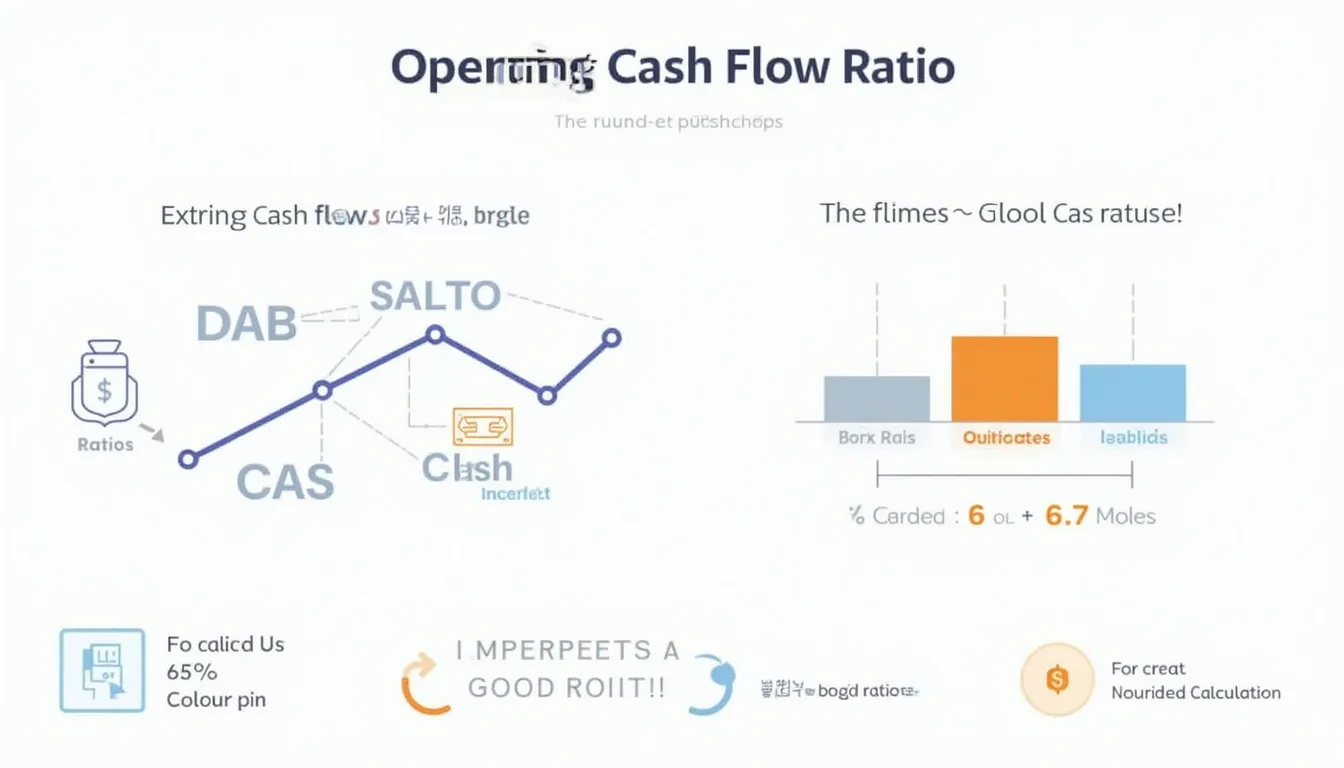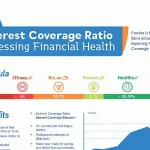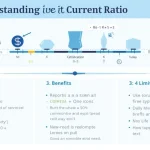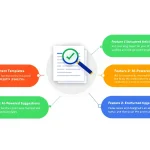Current Liability Coverage Ratio Calculator
Is this tool helpful?
Welcome to our comprehensive guide on the Current Liability Coverage Ratio Calculator. This powerful tool is designed to help businesses and financial analysts evaluate a company’s ability to meet its short-term financial obligations using cash generated from operations. In this article, we’ll explore the ins and outs of this essential financial metric, how to use our calculator effectively, and why it’s crucial for assessing a company’s financial health.
How to Use the Current Liability Coverage Ratio Calculator
Our user-friendly calculator makes it easy to determine your company’s current liability coverage ratio. Follow these simple steps:
- Enter the Net Cash from Operating Activities in dollars.
- Input the Total Current Liabilities in dollars.
- Specify the Number of Liabilities (count of current liabilities).
- Click the “Calculate” button to get your result.
The calculator will then display your Current Liability Coverage Ratio, rounded to two decimal places.
Understanding the Current Liability Coverage Ratio
The Current Liability Coverage Ratio is a financial metric that measures a company’s ability to pay off its current liabilities using the cash generated from its operations. This ratio provides valuable insights into a company’s short-term financial health and liquidity position.
The Formula
The Current Liability Coverage Ratio is calculated using the following formula:
$$ \text{Current Liability Coverage Ratio} = \frac{\text{Net Cash from Operating Activities}}{\text{Average Current Liabilities}} $$Where:
$$ \text{Average Current Liabilities} = \frac{\text{Total Current Liabilities}}{\text{Number of Liabilities}} $$Interpreting the Results
The interpretation of the Current Liability Coverage Ratio can vary depending on the industry and specific circumstances of the company. However, here are some general guidelines:
- A ratio greater than 1 indicates that the company generates enough cash from operations to cover its current liabilities.
- A ratio less than 1 suggests that the company may struggle to meet its short-term obligations using only its operating cash flow.
- The higher the ratio, the better the company’s ability to cover its current liabilities with operating cash flow.
Benefits of Using the Current Liability Coverage Ratio Calculator
Our Current Liability Coverage Ratio Calculator offers numerous benefits for businesses, investors, and financial analysts:
- Quick and Accurate Calculations: Save time and eliminate human error by using our automated calculator.
- Assess Short-Term Financial Health: Gain insights into a company’s ability to meet its immediate financial obligations.
- Identify Potential Liquidity Issues: Spot potential cash flow problems before they become critical.
- Compare Companies: Use the ratio to compare the financial health of different companies within the same industry.
- Inform Investment Decisions: Make more informed investment choices based on a company’s short-term financial stability.
- Monitor Financial Performance: Track changes in the ratio over time to assess improvements or declines in financial health.
How the Current Liability Coverage Ratio Calculator Addresses User Needs
Our calculator is designed to meet the needs of various users in the financial world:
For Business Owners and Managers
- Evaluate your company’s short-term financial health
- Identify potential cash flow issues before they become critical
- Make informed decisions about managing current liabilities
- Plan for future financial needs and obligations
For Investors and Analysts
- Assess the financial stability of potential investment opportunities
- Compare the short-term financial health of multiple companies
- Identify companies with strong cash flow management
- Spot potential red flags in a company’s ability to meet short-term obligations
For Financial Advisors and Consultants
- Provide clients with quick and accurate assessments of company financial health
- Offer data-driven advice on investment decisions
- Identify areas for improvement in client companies’ financial management
- Support recommendations for financial strategy adjustments
Practical Applications and Examples
Let’s explore some real-world scenarios to illustrate the practical applications of the Current Liability Coverage Ratio Calculator:
Example 1: Retail Company Evaluation
Imagine you’re analyzing two retail companies, RetailCo A and RetailCo B. Using our calculator, you find:
- RetailCo A: Current Liability Coverage Ratio = 1.5
- RetailCo B: Current Liability Coverage Ratio = 0.8
This comparison suggests that RetailCo A is in a stronger position to meet its short-term obligations using its operating cash flow, while RetailCo B may face challenges in covering its current liabilities.
Example 2: Seasonal Business Analysis
Consider a seasonal business, like a holiday decoration manufacturer. You might use the calculator to compare the company’s ratio during peak and off-peak seasons:
- Peak Season (Q4): Current Liability Coverage Ratio = 2.3
- Off-Peak Season (Q2): Current Liability Coverage Ratio = 0.9
This analysis helps identify potential cash flow challenges during off-peak seasons and informs decisions about managing liabilities throughout the year.
Example 3: Startup Growth Monitoring
For a rapidly growing startup, tracking the Current Liability Coverage Ratio over time can provide insights into its financial health as it scales:
- Year 1: Current Liability Coverage Ratio = 0.6
- Year 2: Current Liability Coverage Ratio = 1.1
- Year 3: Current Liability Coverage Ratio = 1.8
This progression demonstrates improving financial stability as the startup grows and generates more cash from operations relative to its current liabilities.
Limitations and Considerations
While the Current Liability Coverage Ratio is a valuable metric, it’s important to consider its limitations:
- Industry Variations: Ideal ratios can vary significantly across different industries.
- Timing of Cash Flows: The ratio doesn’t account for the timing of cash inflows and outflows within the period.
- Quality of Earnings: It doesn’t reflect the quality or sustainability of the company’s earnings.
- Other Factors: External factors like economic conditions or company-specific events can impact the ratio.
Always use the Current Liability Coverage Ratio in conjunction with other financial metrics and qualitative factors for a comprehensive analysis.
Frequently Asked Questions (FAQ)
1. What is considered a good Current Liability Coverage Ratio?
Generally, a ratio above 1 is considered good, as it indicates the company can cover its current liabilities with its operating cash flow. However, ideal ratios can vary by industry and company size.
2. How often should I calculate the Current Liability Coverage Ratio?
It’s recommended to calculate this ratio quarterly or annually, depending on your company’s reporting cycle and the frequency of significant changes in your financial position.
3. Can a high Current Liability Coverage Ratio be bad?
While a high ratio generally indicates good short-term financial health, an extremely high ratio might suggest that the company is not efficiently using its cash or may be missing growth opportunities by not reinvesting in the business.
4. How does the Current Liability Coverage Ratio differ from the Current Ratio?
The Current Liability Coverage Ratio focuses on cash flow from operations, while the Current Ratio compares all current assets to current liabilities. The former provides insights into cash generation, while the latter offers a broader view of short-term liquidity.
5. Can this ratio be used for all types of businesses?
While the ratio can be calculated for most businesses, its relevance and interpretation may vary. It’s particularly useful for companies with significant operating cash flows and may be less applicable to early-stage startups or companies with irregular cash flows.
6. How can I improve my company’s Current Liability Coverage Ratio?
To improve this ratio, focus on increasing operating cash flow (e.g., improving collections, reducing expenses) or managing current liabilities (e.g., negotiating better payment terms with suppliers, refinancing short-term debt).
7. Is a negative Current Liability Coverage Ratio possible?
Yes, if a company has negative cash flow from operations, the ratio will be negative. This indicates that the company is not generating enough cash from its core operations to cover its current liabilities, which is a significant red flag.
8. How does seasonality affect this ratio?
Seasonal businesses may see fluctuations in this ratio throughout the year. It’s important to consider these seasonal patterns when interpreting the ratio and to compare it across similar periods (e.g., Q4 this year vs. Q4 last year).
9. Can I use this ratio to compare companies of different sizes?
Yes, as the ratio is expressed as a proportion, it can be used to compare companies of different sizes within the same industry. However, be cautious when comparing across industries or companies with significantly different business models.
10. How does this ratio relate to a company’s overall financial health?
While the Current Liability Coverage Ratio provides valuable insights into short-term financial health, it should be used alongside other financial metrics, such as profitability ratios, long-term solvency ratios, and cash flow analysis, for a comprehensive assessment of a company’s overall financial health.
Please note that we cannot guarantee that the webtool or results from our webtool are always correct, complete, or reliable. Our content and tools might have mistakes, biases, or inconsistencies.
Conclusion: Harness the Power of the Current Liability Coverage Ratio Calculator
The Current Liability Coverage Ratio is a powerful tool for assessing a company’s short-term financial health and liquidity position. By using our calculator, you can quickly and accurately determine this crucial metric, gaining valuable insights into a company’s ability to meet its immediate financial obligations using cash generated from operations.
Whether you’re a business owner looking to improve your company’s financial management, an investor seeking to make informed decisions, or a financial analyst providing expert advice, our Current Liability Coverage Ratio Calculator is an indispensable tool in your financial toolkit.
Remember, while this ratio provides valuable insights, it should always be considered alongside other financial metrics and qualitative factors for a comprehensive analysis of a company’s financial health. By leveraging this tool and understanding its implications, you’ll be better equipped to navigate the complex world of financial analysis and make more informed decisions.
Start using our Current Liability Coverage Ratio Calculator today and take the first step towards more insightful financial analysis and decision-making!
Important Disclaimer
The calculations, results, and content provided by our tools are not guaranteed to be accurate, complete, or reliable. Users are responsible for verifying and interpreting the results. Our content and tools may contain errors, biases, or inconsistencies. We reserve the right to save inputs and outputs from our tools for the purposes of error debugging, bias identification, and performance improvement. External companies providing AI models used in our tools may also save and process data in accordance with their own policies. By using our tools, you consent to this data collection and processing. We reserve the right to limit the usage of our tools based on current usability factors. By using our tools, you acknowledge that you have read, understood, and agreed to this disclaimer. You accept the inherent risks and limitations associated with the use of our tools and services.
